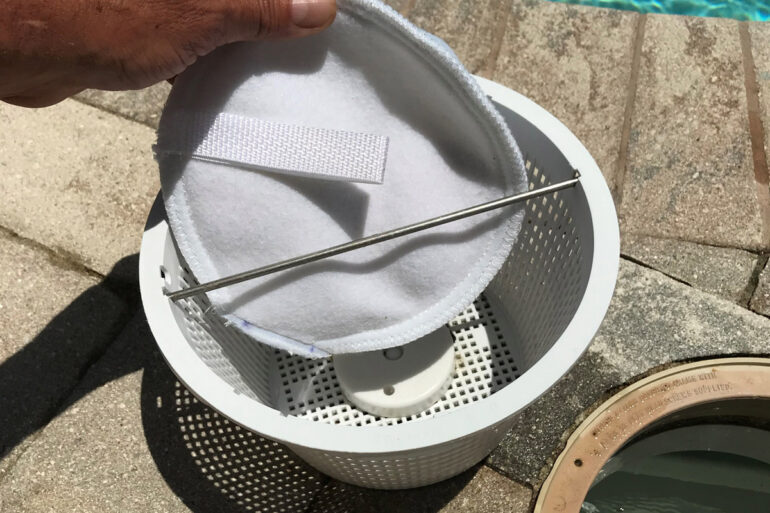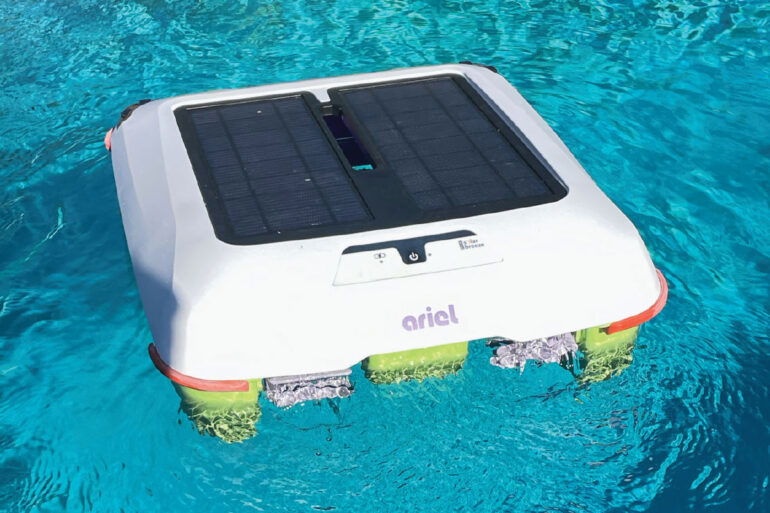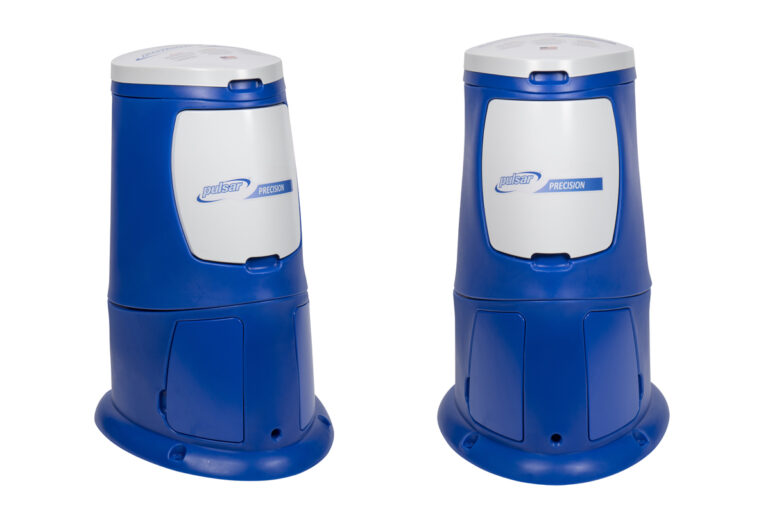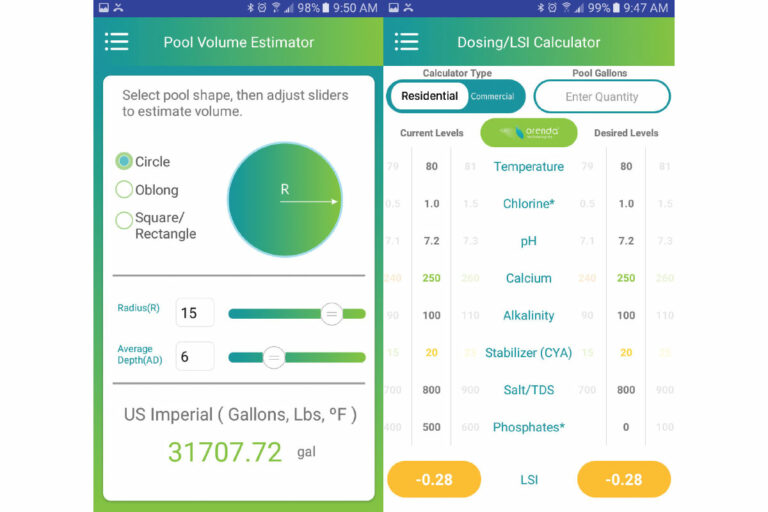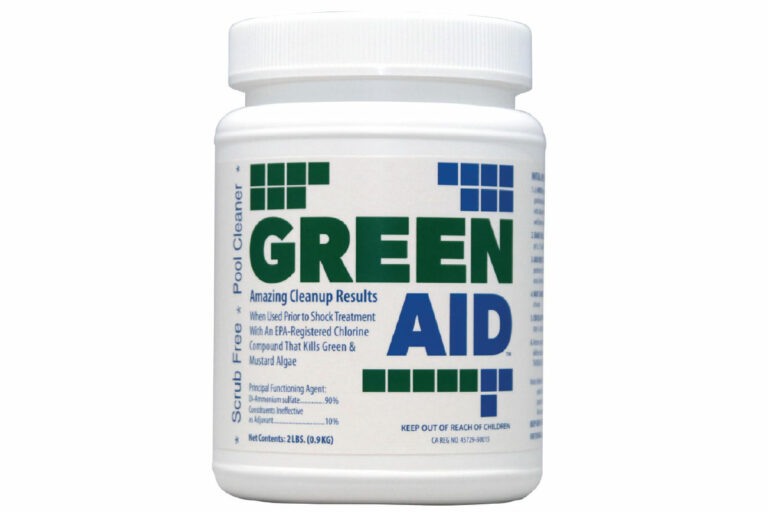Algae Attack
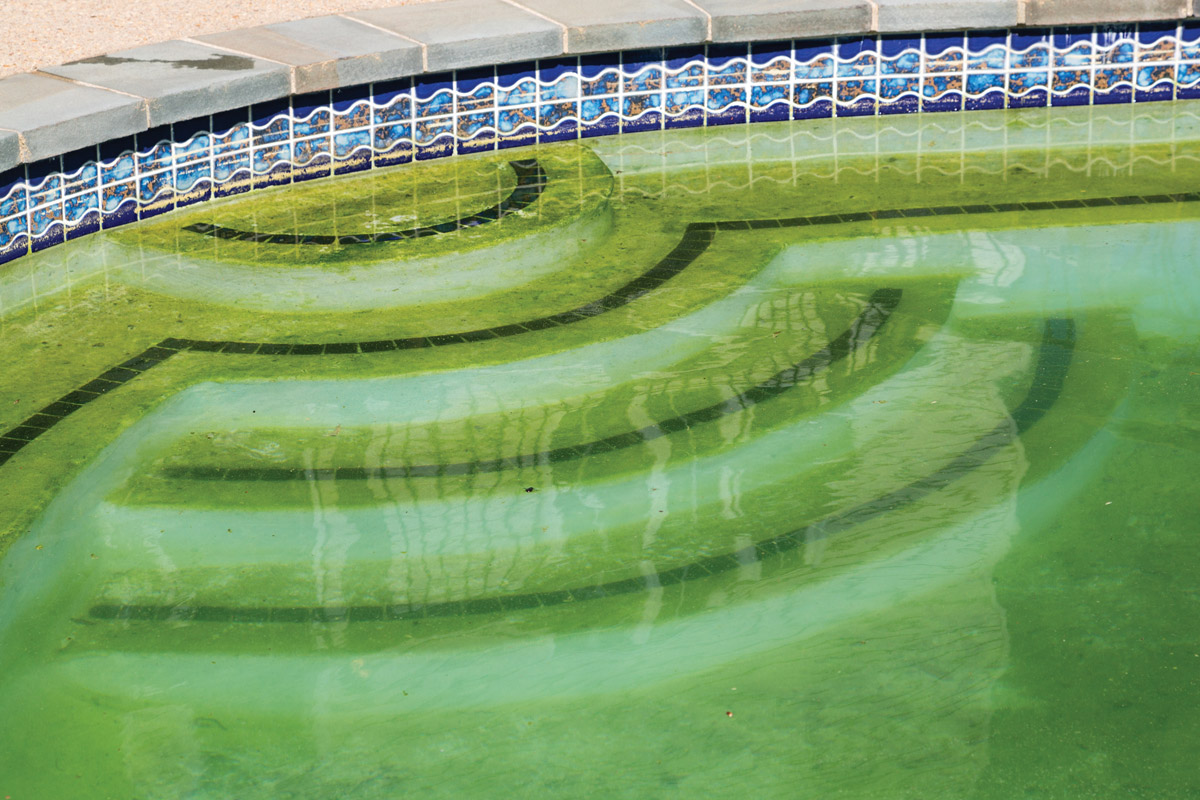
When it comes to pool algae — small organisms that can cause murky water or scum on pool walls or the water surface — pool pros say prevention is the best course, and recommend the regular use of algaecide.
“Algaecide should be used on a weekly basis,” says Theodora Sergiou, vice president and chief operating officer of Nicholas Pools in Toms River, New Jersey. “Adding a few ounces a week will keep algae from developing and spreading throughout the pool.”
Another tip is to brush the pool.
“You want to brush the walls because that’s where the algae is going to be, and for the algaecide to work better,” says Ross Wilbur of Three Generations Pool/Spa Maintenance and Repair in San Clemente, California. “If you get it at least loose on the walls or off the walls, it is better because then the algaecide can work in the water and kill the algae.”
Phosphates act as a food source for algae, causing it to grow. Phosphates can be introduced to the open environment of a pool when nearby landscaping and fertilizers enter the pool through water runoff or rain. Leaves that drop into the water from nearby trees are also common sources.
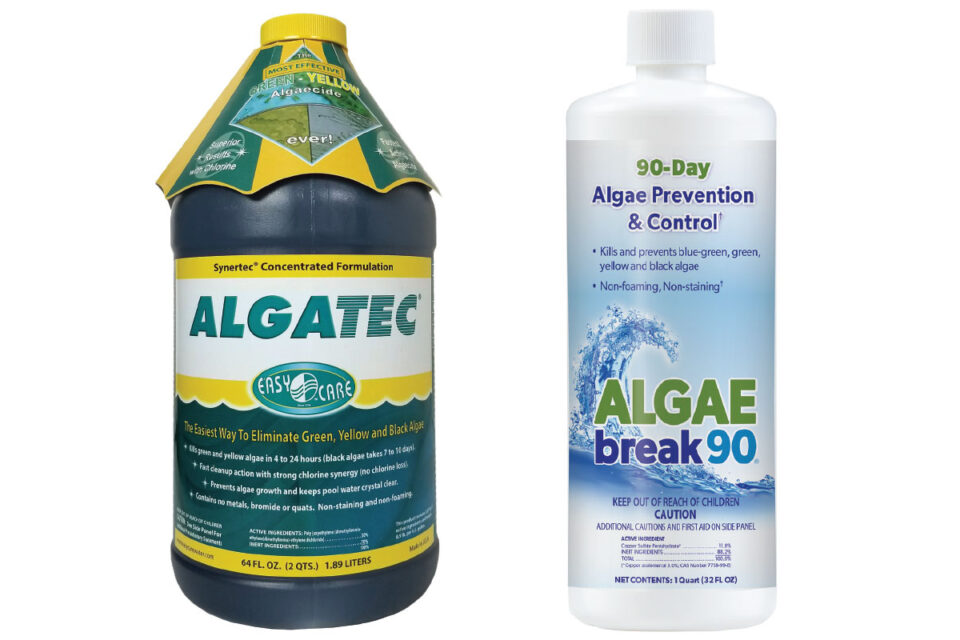
“Phosphates are going to rise in every pool every day, every week, every year,” Wilbur says. “Phosphates are introduced to the water through almost anything — sweat, sunscreen, leaves, twigs. Anything that enters the water is going to have phosphates associated with it. The whole idea is to lower those phosphates as they happen.”
Pair those phosphates with just right conditions, and algae can flourish.
“A hot day with a low chlorine level can be the perfect condition for algae to bloom, and cause cloudy or green water and unfavorable swimming conditions,” Sergiou says.
She says pool professionals need to be able to distinguish among the different types of algae. “Knowing the type of algae it is from its color can help treat, preventing it from growing and spreading and causing a disaster for the pool owner,” Sergiou adds.
Green algae is the most common type of freshwater algae, Sergiou explains. It can grow on the pool surface and be suspended in the water. Yellow algae, also known as mustard algae, is a type of green algae. It always forms on the pool surface, particularly in shaded areas. Pink algae is a less common algae, and forms around pipe fittings and light fixtures on the pool surface. Black algae always forms on the pool surface and can grow quickly.
“We recommend shocking the pool water by adding a high dose of chlorine powder or liquid, brushing the pool surfaces then adding an algaecide,” Sergiou says. “Algae grows in layers and needs to be brushed to be suspended in the water to be eliminated. Follow with a clarifier and run the pool filter overnight to clear.”
Pool professionals should monitor pools for the various conditions that indicate algae is on the rise.
“If the pool floor or wall is slippery, if you see green, mustard, pink or black spots, then you have algae growing in the pool,” Sergiou says.
Sergiou’s company uses its own private-label algaecide, manufactured by N. Jonas & Company. “We have been using them for over 30 years and know which algaecide works best in each scenario,” she says.
Wilbur’s favorite brand is Yellowtrine, which is manufactured by Applied Biochemists, and is geared to treating yellow and mustard algae. Regardless of the brand used, Wilbur advises to never add algaecide to the skimmer. Instead, he recommends adding it to the pool directly.
“When you run any chemical through the skimmer, it’s going to all your exchanges and O-rings,” he says. “You are putting chemical directly through the system, and it is eating away at all your equipment. You want it to go directly into the water where it is circulating.”
Using algaecide won’t reduce the chlorine needed in a pool; algaecide use will likely increase the chlorine consumption.
“The algaecide will [deplete the existing] chlorine level dramatically, so you’re going to have to add chlorine on top of it in order to activate the algaecide and to best utilize it in the pool,” Wilbur says.
Preventing algae growth is more cost effective than having to treat an algae problem.
“If we’re not taking care of our phosphates and we have to add algaecide, it’s a very expensive product — and then we have to add chlorine on top of that,” Wilbur says. “It is a lot of chemical cost for me and my guys when we could have just been diligent about those phosphates every week and eliminated them.”

